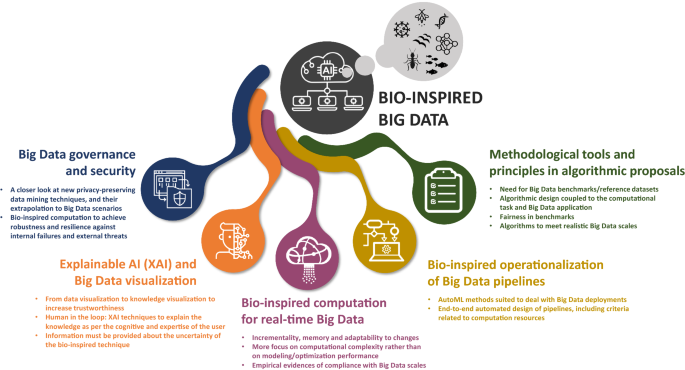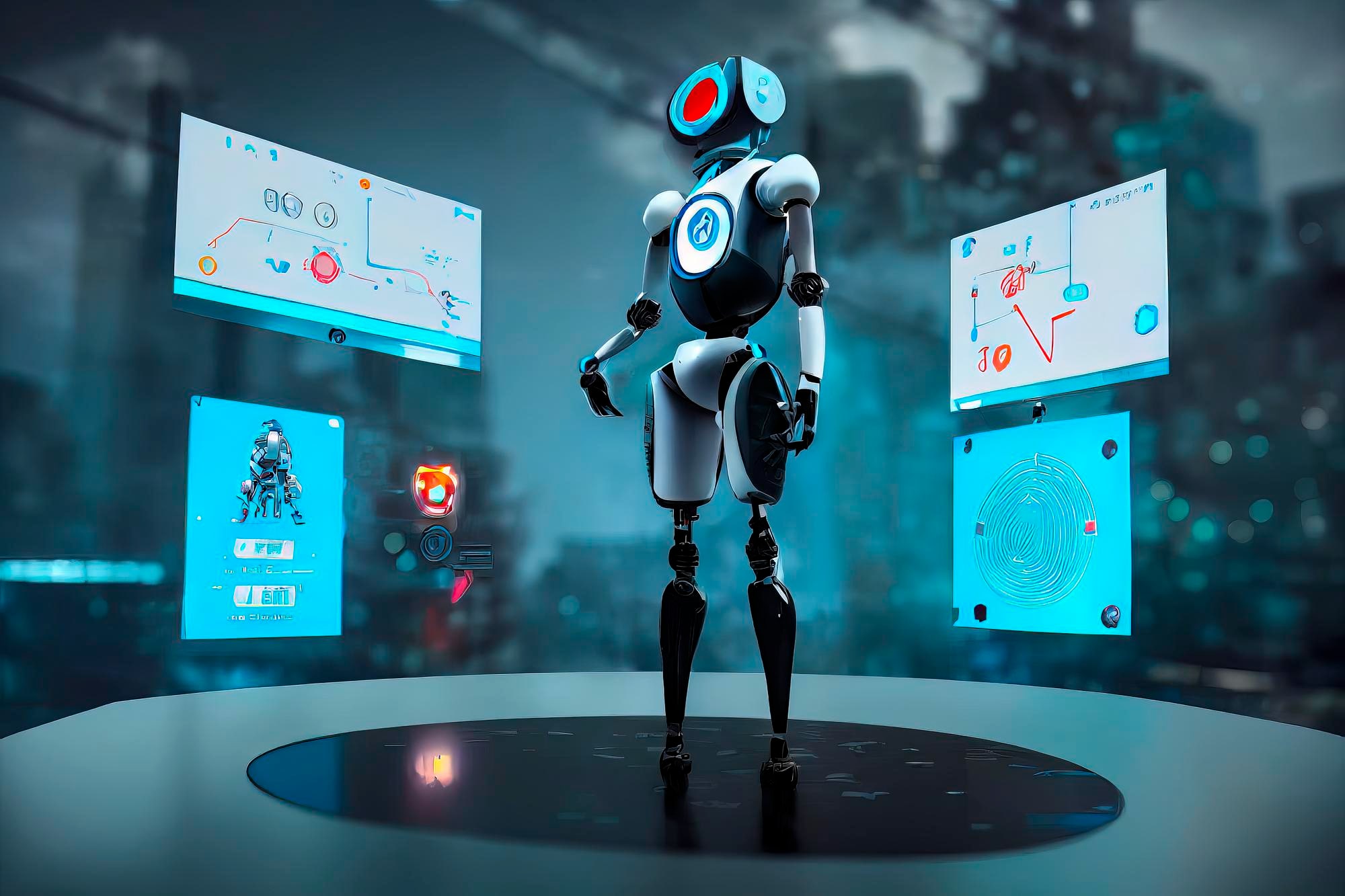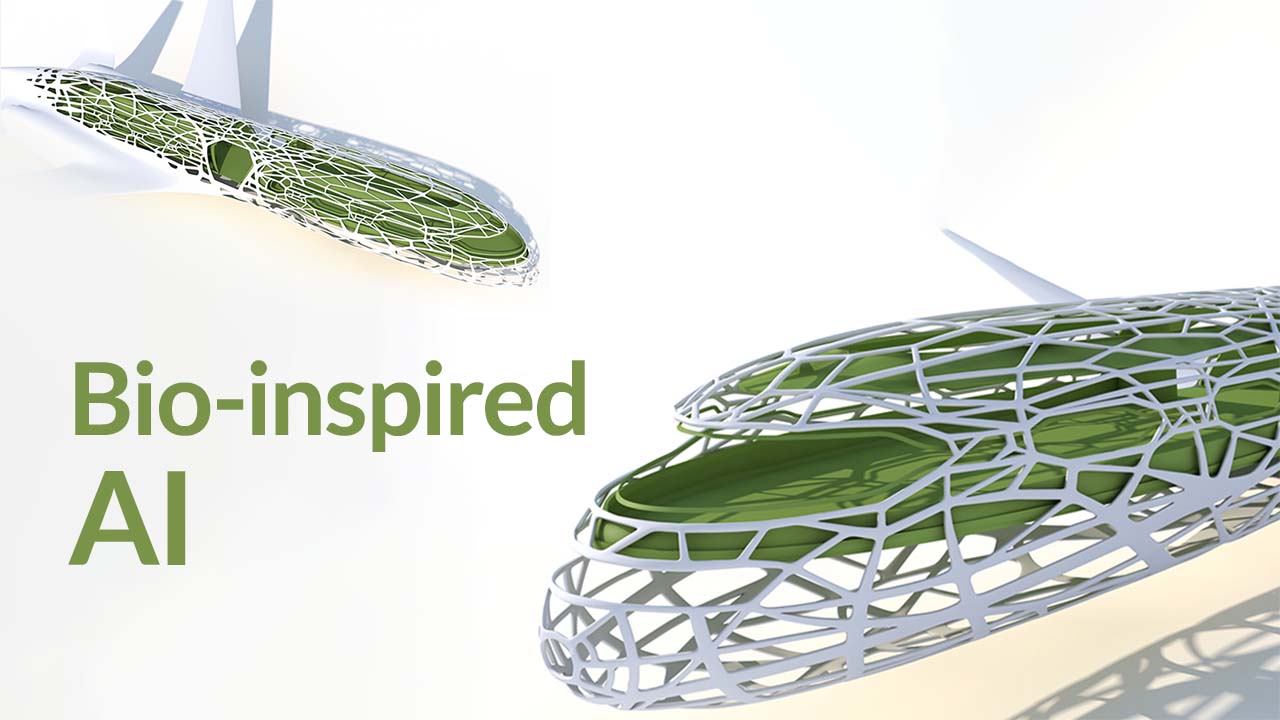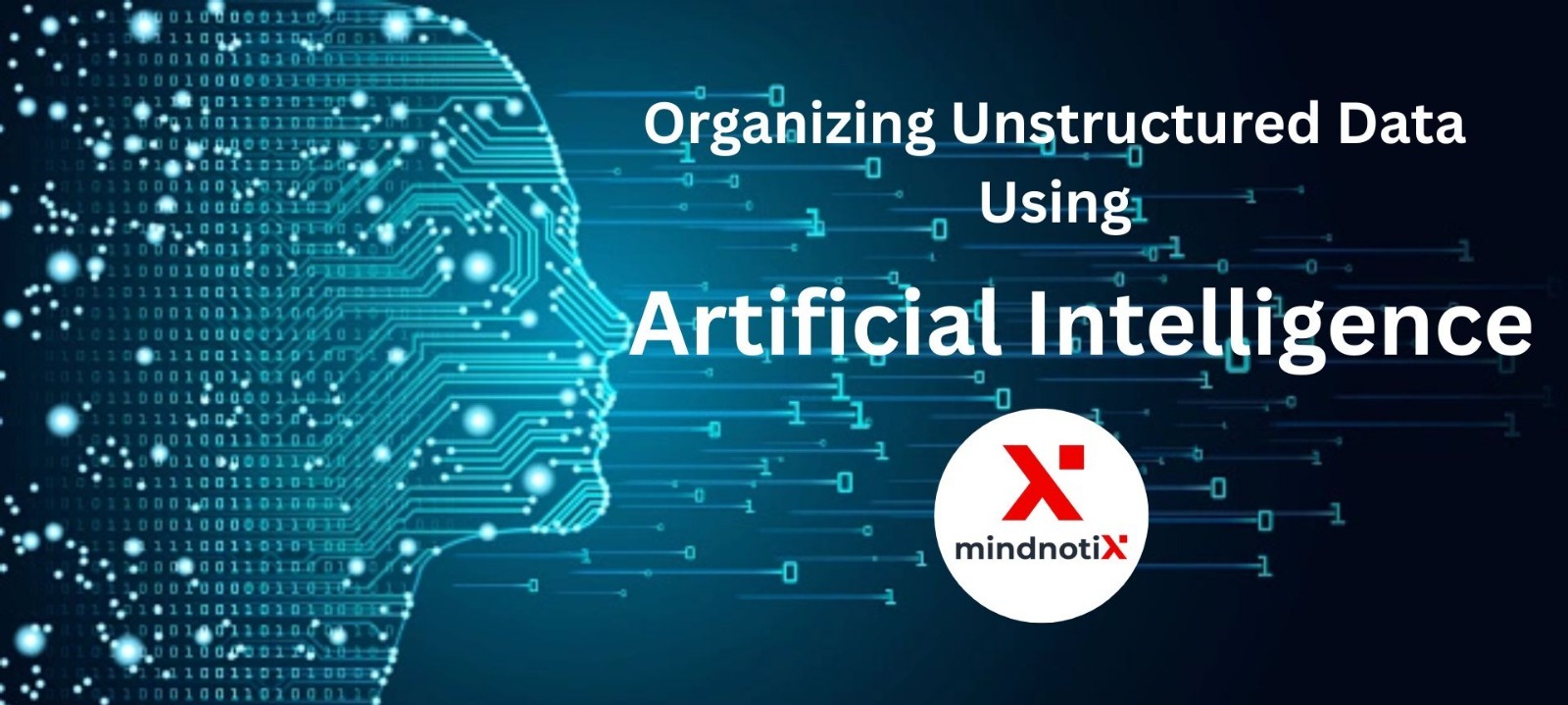For centuries, humans have marveled at the intricate beauty and efficiency of the natural world. From the graceful flight of a hawk to the complex social structures of ant colonies, nature seems to possess an innate genius when it comes to problem-solving and adaptation. Now, this very same genius is inspiring a groundbreaking new field in artificial intelligence (AI) – bio-inspired AI.
This introduction dives into the exciting world of bio-inspired AI, exploring how scientists are learning from nature to create more efficient and intelligent systems. We'll delve into what bio-inspired AI is, how it works, and the vast potential it holds for revolutionizing various aspects of our lives. Get ready to discover how the natural world is becoming the blueprint for the future of AI.
For decades, science fiction has painted a picture of artificial intelligence (AI) surpassing human intelligence. While that future may still be distant, the field of AI is undergoing a fascinating shift. Instead of solely focusing on replicating human thought processes, researchers are turning to the natural world for inspiration. This exciting new approach is called bio-inspired AI, and it holds immense potential for creating more efficient and powerful systems.
Nature has been honing its algorithms for billions of years. From the complex problem-solving skills of ant colonies to the elegant design of a bird's wing, the natural world is brimming with ingenious solutions. Bio-inspired AI seeks to understand these biological systems and translate their underlying principles into computational models. This can involve studying everything from the structure and function of the human brain (leading to artificial neural networks) to the collective behavior of social insects (inspiring swarm intelligence algorithms).
The benefits of bio-inspired AI are numerous. Here are a few key areas where it's making a significant impact:
- Optimization: Imagine a delivery company that utilizes an AI system inspired by ant colony behavior. This system could dynamically adjust delivery routes based on real-time traffic data, mimicking the way ants find the shortest path to food sources. This could lead to significant improvements in efficiency and cost savings.
- Material Science: By studying the remarkable properties of natural materials like spider silk, bio-inspired AI can help researchers design new materials with superior strength, flexibility, and other desirable characteristics.
- Robotics: Taking inspiration from how animals move and interact with their environment, bio-inspired AI can lead to the development of robots that are more agile, adaptable, and energy-efficient.

Of course, bio-inspired AI is not without its challenges. Understanding complex biological systems can be difficult, and translating those insights into practical algorithms requires significant research effort. Additionally, some biological processes are still not fully understood, making it difficult to accurately model them in AI systems.
Despite these challenges, the potential of bio-inspired AI is undeniable. By learning from nature's genius, we can create new AI systems that are more efficient, powerful, and ultimately, beneficial for humanity. This is a field brimming with excitement, and the innovations that emerge from it have the potential to revolutionize various aspects of our lives. As research progresses, we can expect bio-inspired AI to play an increasingly important role in shaping the future.
Specific Applications:
Medical Diagnosis: Bio-inspired algorithms can analyze vast medical datasets, mimicking the human brain's pattern recognition abilities, to identify diseases and develop personalized treatment plans.

Cybersecurity: Inspired by the immune system's ability to detect and neutralize pathogens, bio-inspired AI can create intelligent systems that can adapt and defend against constantly evolving cyber threats.
Financial Modeling: Borrowing from how biological systems evolve and adapt, bio-inspired AI can create more robust and dynamic financial models that can better predict market fluctuations.
Technical Deep Dive (Optional):
Types of Bio-inspired AI: Briefly explain different subfields like artificial neural networks, evolutionary algorithms, and swarm intelligence, with a simple example for each.
Challenges of Implementation: Discuss the complexities of translating biological processes into code, the need for vast data sets, and the limitations of current computational power.
The Future of Bio-Inspired AI:
Ethical Considerations: Explore potential ethical concerns surrounding bio-inspired AI, such as bias in algorithms and the societal impact of highly advanced AI systems.
Human-AI Collaboration: Discuss how bio-inspired AI can complement human intelligence, leading to more collaborative and efficient work environments.
Merging with Other Fields: Touch upon how bio-inspired AI can intersect with other fields like synthetic biology and brain-computer interfaces, leading to groundbreaking advancements.
Engaging Content:
Interviews with Experts: Feature interviews with researchers or developers working in bio-inspired AI to provide a personal touch and showcase the human element behind the technology.
Real-world Examples: Showcase concrete examples of how bio-inspired AI is already being used in various industries, making the concept more relatable to readers.
Interactive elements: Consider including quizzes, polls, or infographics to keep readers engaged and make the information more visually appealing.
Unveiling the Unfamiliar: Uncharted Territories in Bio-Inspired AI
While the applications of bio-inspired AI in areas like robotics and medical diagnosis are well-known, there are exciting and lesser-explored frontiers waiting to be explored. Here are some off-the-beaten-path topics to consider for your blog:
Bio-inspired AI for Sustainability: Nature has perfected the art of living within its means. Bio-inspired AI can be used to develop sustainable solutions, like mimicking natural waste-reduction processes or creating energy-efficient algorithms inspired by biological energy production.

Biomimetic Materials for AI Hardware: Can we design computer chips inspired by the human brain's structure for improved processing power and energy efficiency? This intersection of biomimetic materials and AI hardware is a fascinating frontier with vast potential.
Bio-inspired AI and Collective Intelligence: Swarm intelligence, the collective behavior of social insects, offers a unique lens for AI development. Imagine AI systems that can learn and adapt through collaboration, similar to how ant colonies find optimal solutions. This could revolutionize problem-solving in various fields.
Biologically Inspired Learning Algorithms: Our understanding of memory formation and learning in the brain is still evolving. Bio-inspired AI can explore new learning algorithms that mimic the brain's plasticity and adaptability, leading to more efficient and robust AI systems.
The Intersection of Bio-inspired AI and Brain-Computer Interfaces: As brain-computer interfaces (BCIs) become more sophisticated, bio-inspired AI can play a crucial role in deciphering brain signals and creating intuitive communication channels between humans and machines.
The Whispering Forests: Bio-inspired AI and Plant Communication
While the focus of bio-inspired AI often falls on animals and the human brain, a fascinating and under-explored frontier lies in the realm of plant communication. Recent research suggests that plants may possess a complex network of chemical signaling and even electrical pathways for communication. Imagine bio-inspired AI that can decode these silent conversations between trees in a forest. This could revolutionize our understanding of ecosystems, leading to more sustainable agricultural practices and even the development of early warning systems for environmental changes. By mimicking the way plants communicate with each other and their environment, we could create AI systems that can monitor and predict potential threats to our precious ecosystems. This "whispering forest" concept highlights the vast untapped potential of bio-inspired AI, where the most groundbreaking solutions might lie hidden in plain sight, waiting to be discovered in the natural world.
Bio-inspired AI enhances biomimicry efforts in several ways:
Accelerated Research: AI can accelerate biomimicry research by quickly processing large amounts of data, identifying patterns, and generating new ideas. This can lead to faster discovery and innovation in various fields.
Improved Efficiency: AI algorithms can optimize biomimicry processes, reducing the time and resources required for experimentation and analysis. This efficiency can be particularly useful in complex systems where traditional methods might be too time-consuming.
Enhanced Design: AI can assist in the design process by generating novel solutions based on natural patterns and structures. This can lead to more innovative and effective biomimetic designs.
Multidisciplinary Collaboration: The integration of biomimicry and AI encourages collaboration between experts from different fields, fostering a more comprehensive understanding of complex problems and their solutions.
Ethical Considerations: AI can help address ethical concerns in biomimicry by providing insights into the potential consequences of biomimetic designs and ensuring that they align with moral principles.
Scalability: AI can be used to scale up biomimicry applications, making them more practical and applicable to real-world problems. This is particularly important for addressing large-scale challenges like climate change.
Data Analysis: AI can analyze large datasets generated from biomimicry experiments, providing valuable insights into the behavior and performance of biomimetic systems. This data analysis can help refine biomimicry designs and optimize their performance.
Generative Design: AI can be used for generative design, which involves creating novel solutions based on natural patterns and structures. This can lead to more innovative and effective biomimetic designs.
Edge Computing: AI models deployed on edge devices can reduce the cost and energy usage associated with biomimicry applications, making them more practical for real-world use.
Bio-Signal Processing: AI can enhance bio-signal processing, which is crucial for biomimicry applications that involve analyzing biological data. This can improve the accuracy and efficiency of biomimetic systems.

The main challenges in integrating AI with biomimicry include:
Complexity of Biological Systems: Nature's designs are often incredibly complex, with intricate interactions between different components. Simplifying these systems for computational models can be challenging, potentially leading to a loss of nuance and effectiveness.
Scalability: While a swarm of insects can achieve remarkable feats, replicating this behavior with large-scale AI systems can be computationally expensive and resource intensive. Determining how to scale bio-inspired algorithms for real-world applications remains an ongoing challenge.
Ethical Considerations: Nature's solutions aren't always sunshine and rainbows. Mimicking predator-prey relationships in AI systems could raise ethical concerns, especially in the development of autonomous weapons. Careful consideration of the potential implications of biomimicry is crucial.
Multidisciplinary Collaboration: Integrating AI with biomimicry requires collaboration between experts from diverse fields, including biology, engineering, and computer science. Ensuring effective communication and collaboration among these experts can be challenging.
Data Analysis and Modeling: The accurate analysis and modeling of biomimetic systems is a challenging task due to the randomness inherent in models as representations of any real system over time. AI techniques can help address this challenge, but their effective application requires careful consideration.
Balancing Innovation with Ethical Awareness: The integration of AI and biomimicry must be done with ethical awareness, ensuring that the innovations produced are sustainable, efficient, and morally informed. This balance can be difficult to maintain, especially as the field continues to evolve rapidly.
Addressing the Gap Between Biological and Artificial Systems: Biomimicry often involves translating biological principles into artificial systems. Addressing the gap between these two domains can be challenging, requiring careful consideration of how to effectively apply biological insights to AI development.
Ensuring Real-World Applicability: While biomimicry and AI can lead to innovative solutions, ensuring that these solutions are practical and applicable to real-world problems can be a significant challenge.
For more information contact : support@mindnotix.com
Mindnotix Software Development Company


 AI-Taxi App
AI-Taxi App AI-Food App
AI-Food App AI-Property Mgmt App
AI-Property Mgmt App AI-CRM
AI-CRM AI-Fantasy App
AI-Fantasy App
 Web Development
Web Development App Development
App Development Business & Startup
Business & Startup Hire Developer
Hire Developer
 Digital Marketing
Digital Marketing Lead-generation
Lead-generation Creative Agency
Creative Agency Branding Agency
Branding Agency Augmented Reality
Augmented Reality Virtual Reality
Virtual Reality Internet of Things
Internet of Things Artificial Intelligence
Artificial Intelligence Blockchain
Blockchain Chatbot
Chatbot




